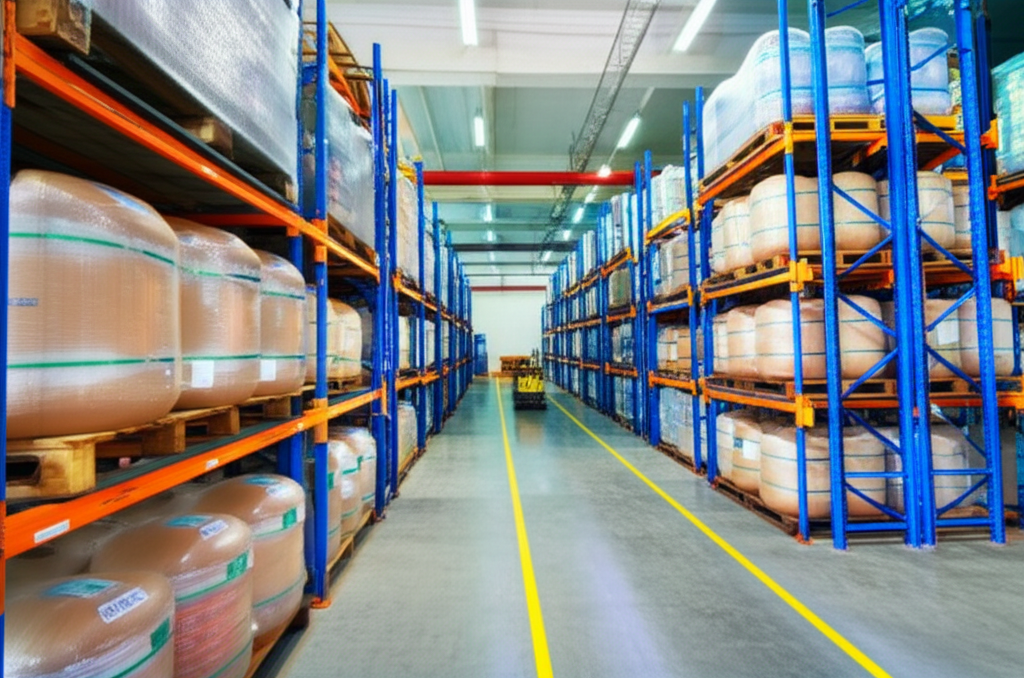Ethyl maltol (2-ethyl-3-hydroxy-4H-pyran-4-one), a ubiquitous food additive prized for its caramel and fruity aroma, faces significant production challenges. Traditional industrial methods, like the furanol and furfural pathways, frequently employ toxic chlorine gas—a hazardous, corrosive substance posing severe environmental and safety risks. While alternatives using hydrogen peroxide (H₂O₂) exist, they often rely on expensive, hard-to-recycle catalysts like titanium silicate-1 (TS-1), hindering their economic viability despite offering lower environmental impact.
A groundbreaking synthetic process now offers a robust solution. This innovative method utilizes nano-titanium dioxide (TiO₂) anchored onto carbon nanotubes (CNTs) as the catalyst, replacing conventional TS-1 or hazardous chlorine. Crucially, the catalyst is firmly immobilized onto the metallic mesh packing within a specialized ultrasonic rotating packed bed (URPB) reactor, addressing the critical issue of catalyst loss and enabling straightforward recovery for reuse.
The synthesis occurs efficiently in two primary stages within the URPB system. First, α-furfuryl alcohol and H₂O₂ are introduced into the reactor operating at 30-70°C. Simultaneously, the reactor rotates at 400-1000 rpm while ultrasonic waves are applied. Under this unique environment combining intense centrifugal force, ultrasonic cavitation, and high shear stress from the packed mesh, reactants are micronized, maximizing contact with the immobilized catalyst. This results in the highly efficient (up to 93% yield) conversion to the vital intermediate, 6-hydroxy-2-ethyl-2H-pyran-3-one, typically within 3 hours.
The nano-TiO₂/CNT catalyst itself represents a significant advancement. Unlike TS-1, the titania content (1-10 wt%) is easily controlled during synthesis, allowing precise tuning of catalytic activity. The CNTs are pre-treated with oxygen plasma, enhancing their surface with hydroxyl groups for superior dispersion during catalyst preparation via hydrothermal reaction. This modification ensures high adhesion and stability when bound to the stainless-steel mesh substrate using a polyglycol binder and sintering process.
Following the oxidation step, the intermediate solution undergoes downstream processing. It reacts with ethanol in the presence of dilute hydrochloric acid (5-15%) at 40-80°C to form 2-ethyl-6-ethoxy-2H-pyran-3-one. This compound is then neutralized and further oxidized with H₂O₂ under cold conditions (0-5°C), followed by hydrolysis and rearrangement using concentrated hydrochloric acid at elevated temperatures (80-100°C) to yield the final ethyl maltol product, reaching yields of approximately 60%.
The core innovation lies in the synergistic integration of the nano-TiO₂/CNT catalyst with the URPB reactor. Immobilization onto the robust metallic mesh ensures near-total retention of the catalyst after reaction. Experimental results demonstrated negligible mass loss even after 5 consecutive reaction cycles, proving exceptional reusability—a stark contrast to significant losses (>36%) observed when using unimmobilized catalyst powder. Furthermore, tests confirmed the vital contribution of both ultrasound and rotation; disabling either feature notably reduced intermediate yields to around 89% and 88%, respectively.

This novel synthesis overcomes the major drawbacks of previous ethyl maltol production routes. It completely eliminates reliance on toxic chlorine gas, leveraging the environmentally benign oxidant H₂O₂. The readily tunable and non-toxic nano-TiO₂/CNT catalyst offers significantly lower material costs compared to TS-1. Crucially, the unique reactor design and catalyst immobilization strategy facilitate simple separation and reuse of the catalyst, minimizing waste and operational costs. With high yields achieved within short reaction times under easily controlled conditions, this method presents a compelling pathway for safer, more sustainable, and economically favorable industrial-scale production of ethyl maltol.
Manufacturing Facilities






Professional Export Experience
to Global Customers

1. 20 years of R&D, manufacturing and sales experience, serving customers in 60 countries and regions around the world;
2. Own R&D laboratory, pilot platform and large-scale production workshop, which can meet the audit requirements of global customers;
3. We can satisfy customers' perfect transition from small scale lab requirements (gram level) to commercialization requirements (hundred tons level).
A: We don't have Minimum Order Quantity, exact quantity should be provided before quotation for us to calculate the exact cost.
A: We don't provide free samples due to lots of request and expensive international courier's cost, we can deduct the sample charge after commercial order placed.
A: Our payment terms: Small or sample order: T/T IN ADVANCE. Commercial order: First order should be by T/T IN ADVANCE or L/C at sight, and following orders T/T 30~90days is acceptable subject to approval of credit application.